By Godwin Jarkwa
When Nigeria’s cities are often described with words like “chaotic,” “crowded” or “unplanned,” Akwa Ibom State tells a different story. In over a quarter of a century, successive governments here have placed unusual emphasis on beauty – roundabouts turned into landmarks, highways lined with greenery and public spaces designed not just for movement but for pride. From Uyo to Ikot Ekpene and Eket, the skyline of Akwa Ibom has been shaped as much by bulldozers as by sculptors and landscapers.
This journey of beautification, spanning 2000 to 2025, was never an accident. It was political, cultural and even environmental. Each administration, from Victor Attah to Umo Eno, has left visible imprints that still speak of civic ambition. What follows is not just a record of projects but a reminder of how beauty, when built into governance, can create identity.
Governor Umo Eno’s “Smart City” push (2023–2025)
Governor Umo Eno has taken the baton with his ARISE Agenda, framing beautification as part of a broader “Smart City” plan. Unlike his predecessors, his touch so far has been less monumental and more technological. Solar-powered streetlights now guard Uyo’s markets and flyovers, reducing both carbon footprint and insecurity.
His mandate to the Uyo Capital City Development Authority is clear: every flyover, every corridor, must wear a face of beauty. From landscaping to street furniture, the city is being retouched in strokes that blend modern efficiency with visual delight. In this, Eno is extending the vision of his predecessors into the age of renewable energy and climate consciousness.
What holds it all together
Across administrations, some threads run constant. Roundabouts have become the state’s unofficial emblems, ornamented, lit, sculpted and, in some cases, even animated with dancing fountains. Streetlights, first rolled out aggressively by Akpabio and now solarised by Eno, have shaped the very memory of night in Uyo. And civic spaces like Ibom Plaza, despite their ups and downs, continue to draw both political and cultural weight.
Eno has added a fresh landmark to Uyo’s landscape with Model Primary Schools, Model Health Centres, Arise Compassionate Homes, Senior Citizens’ Centre, Command and Control Centre, Judiciary Village and more. The unveiling of a new recreation centre, along Dominic Utuk Avenue, has transformed a once-neglected water channel into a green relaxation park. The project, which falls under the ARISE Agenda’s urban renewal drive, has turned what was previously an eyesore into a modern leisure hub designed for both residents and visitors.
The park features landscaped lawns, pedestrian walkways, seating areas and decorative lighting, creating a serene environment within the heart of the capital city. By converting the drainage corridor into a functional public space, the government has not only beautified the area but also promoted environmental sustainability through the integration of green design.
The Governor described the project as part of his vision to make Uyo a cleaner, safer and more livable city. Residents welcomed the development, noting that the Green Park offers families, students and workers a new spot for relaxation, social gatherings and evening strolls while also contributing to the city’s growing reputation as one of Nigeria’s most attractive urban centres.
The Udom Emmanuel renewal project (2015–2023)
Udom Emmanuel inherited a city glowing with lights but also battling the rust of neglect. His “Dakkada” philosophy leaned on restoration and green integration. The Ibom Plaza, once a symbol of Attah’s vision, was rehabilitated to recapture its communal pulse. In Eket, new roads, fountains and streetlights became the centrepiece of a town-wide renewal.
Perhaps Udom’s boldest move came with the creation of boulevards. Clement Isong Avenue, rebuilt as a 10-lane, tree-lined stretch, gave Uyo its first taste of boulevard-style modernity. Meanwhile, the renaming of Airport Road to Udom Emmanuel Boulevard in 2024 (though commissioned by Eno, his successor) cast his imprint in stone.
He also tied beauty to industry. The coconut planting drive, initially framed as an agro-industrial plan, doubled as environmental design, greening corridors and enhancing climate resilience. These choices reflected an understanding that beautification was not just cosmetic but ecological.
As Nigeria wrestles with questions of urban decay and environmental sustainability, the Akwa Ibom experiment offers a useful case study: beauty matters. Not as vanity but as a tool of governance, cohesion and resilience.
The Akpabio uncommon transformation (2007–2015)
Obong Victor Attah built the foundation, Chief Godswill Akpabio turned it into a spectacle. His era was branded “Uncommon Transformation” and, in truth, Uyo changed before everyone’s eyes. Flyovers rose at Itam Junction, roundabouts were landscaped into gardens, and streetlights bathed the city in an amber glow at night.
The once-ordinary Wellington Bassey Way became a model of urban lighting. Junctions such as Nwaniba by Power City or Ikpa Road by Uniuyo First Gate were redesigned into living postcards, dotted with signage, sculptures and greenery. The difference was measurable.
His road projects were equally ambitious. The dualisation of the Uyo-Ikot Ekpene highway, Abak-Ikot Ekpene Highway, the reconstruction of Olusegun Obasanjo Way, the massive upgrade of Eket-Ibeno Road, leading to Mobil’s operational base, all carried the twin stamps of infrastructure and aesthetics. The first flyover at Itam was more than traffic management; it was a declaration that Akwa Ibom had arrived.
The Attah’s foundation (2000–2007)
Attah, the architect-turned-Governor, was the first to treat urban aesthetics as a serious state policy. His crowning gift was the Ibom Plaza in Uyo, opened in 2001 as a civic square with a fountain, amphitheatre and broad pedestrian space. For many residents, it was the first time their capital looked like a “city.” That plaza, though now weathered and refurbished over time, remains one of Uyo’s cultural anchors.
Attah also planted symbols of peace and pride. The Itam Peace Column and the city’s early gateways gave Uyo its first monumental roundabouts. Also did the Unity Park with a massive green area that has been hosting state celebrations. At a time when Nigeria’s democracy was still in its infancy, these projects carried meaning: they told people that public space could inspire.
On roads, Attah laid down arteries that still carry the city today. He dualised Oron Road, opened Udo Udoma Avenue, expanded Nwaniba Road to Ibom Hotels and built the link from Uyo to the new airport he conceived. His hand was visible in township roads, airport access routes, and the Ibom Power Plant feeder lines. They were not just roads; they were stages upon which his vision of a modern Akwa Ibom was set.
The lesson is simple: beautification is not a side project. It is a statement of identity. For 25 years, Akwa Ibom has shown that when leaders treat aesthetics as policy, cities transform from concrete corridors into living spaces of pride.
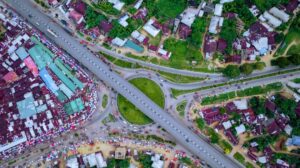
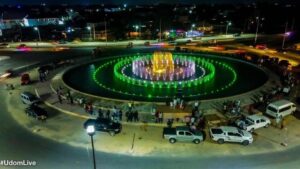
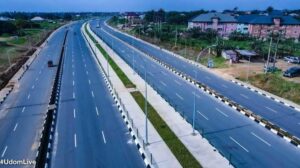
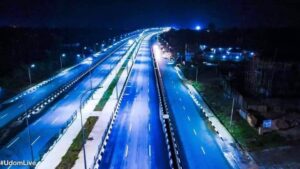
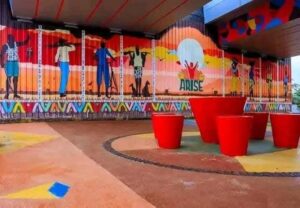
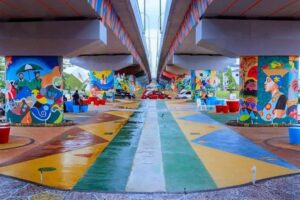
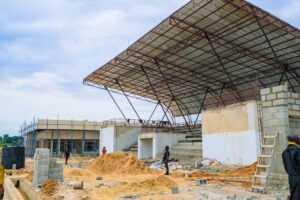


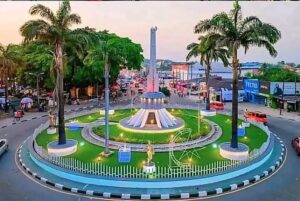
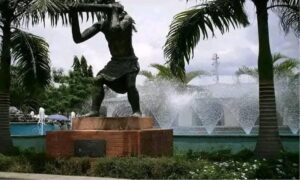
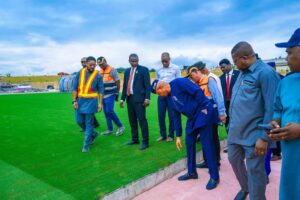
#AriseRenewedHopeMedia



